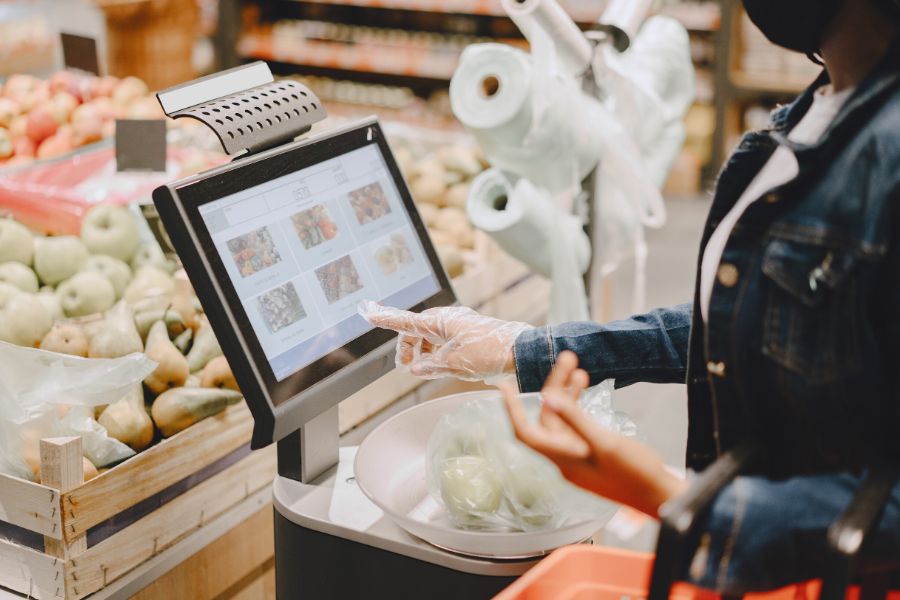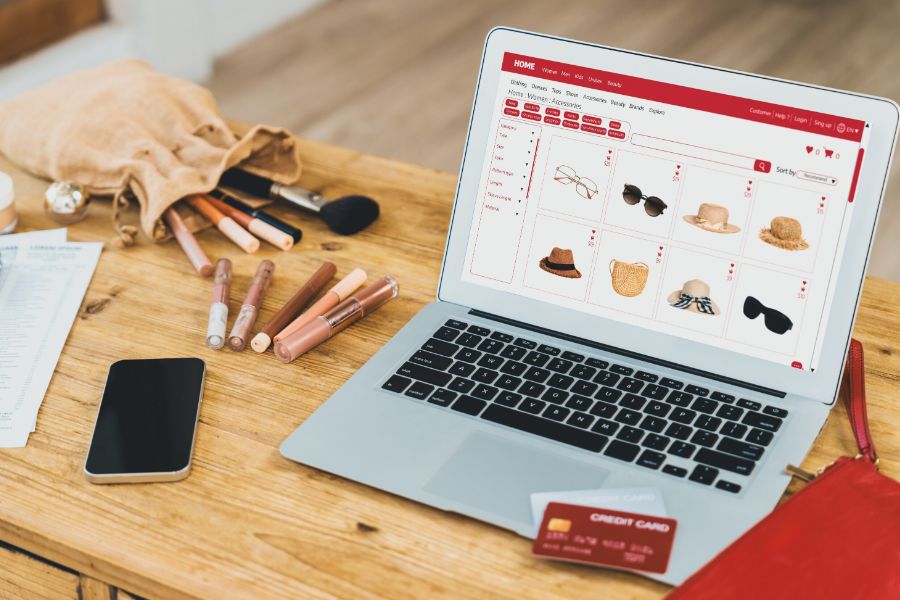Self-checkout is a convenient shopping journey where customers ring up their own purchases, bag them, and pay without the assistance of a cashier. This approach has been deployed in numerous supermarkets, fast-food restaurants, and chain retailers. This article will give you an overview of self checkout and its striking impacts on your business.
What is self checkout?
In general terms, self checkout refers to paying for things in a retail setting using a self service methodology. It is frequently entirely or partially assisted by smart technology.
For several years, self checkout has grown in popularity, and with the emergence of COVID, it has become the preferred method of payment for many customers. It cuts down on time spent in line and reduces touch with both workers and other customers.
Types of self checkout
While there are many different types of self checkout technology accessible today, there are three primary ones.
Scan and Go Systems
This is when a store gives a customer a “scan device” that they can use to scan the barcodes of things they want to buy while shopping. The user needs to go to a set point at the end of their shopping journey and dock their scan device in a terminal, which then processes the transaction and receives payment from the consumer.
Kiosk self checkout
This is when a customer brings the chosen products to a specific location in the store and has them scanned, either using the barcodes on the items or by selecting an item type from a list of alternatives displayed on an interactive screen by the machine. The customer can then pay for their purchases with cash or a credit or debit card.
Mobile self checkout
The third main option in use now is similar to the Scan and Go system described above, except that instead of using a scan device provided by the retailer, the consumer uses their own mobile device to scan and record products.
Retailers have only recently begun to offer this method, using a bespoke app provided by the shopkeepers (or a third party) and the camera functionality built into the device. This also allows customers to pay for their purchases using their mobile devices from anywhere in the store. That is the reason why ConnectPOS is a common choice for several merchants. This platform applies cutting-edge technology for multiple touchpoints, creating a better omnichannel journey for both customers and retailers.
Some benefits of self checkout adaptation
Quicker checkout
The Washington Post conducted an experiment a few years ago to measure how long it took to buy five items at self-checkout lanes in several grocery stores throughout the Washington area. Regardless of the retailer, they discovered that each transaction took less than two minutes to complete.
Self-checkout is being taken to new heights by certain large shops. They provide mobile checkout, which allows customers to scan barcodes with their phones while shopping.
If you don’t use this quick option, you might be able to save time by having a single line for all registers, but clients who aren’t used to it might be confused or upset. Now, single lines at self-checkout lanes aren’t necessarily required, but it’s become an unofficial norm among consumers.
Labor cost reduction
Using self checkout is considered a way of saving money because it eliminates the need for a cashier at each register. Retailers are divided since one staff can easily oversee 6-10 self service registers.
In the United States, labor shortages and job losses are a major source of discontent. Other businesses are wary of tarnishing their brand image. However, several observers noted that cashiers aren’t always fired as a result of self checkout, but rather redeployed to new, more demanding jobs. This implies they’re still on the payroll, but they’re contributing more to the store’s overall profitability and revenue.
Self service checkout kiosks, according to some retail experts, should be considered as less of a labor saver. Kiosks, on the other hand, are more of a tool for cashiers to serve numerous clients at once. This allows retailers to deal with traffic congestion and serve more consumers during peak periods.
Customer favorite option
Customers prefer self checkout because of the perceived time savings, according to Consumer Reports. In addition, a 2004 McDonald’s study indicated that consumers who used self-service kiosks were more likely to order supersize meals, paying an average of 30% more each transaction.
Self-service in restaurants usually takes the form of tablets at the table, as seen in restaurants such as Olive Garden and Chili’s. According to a survey conducted by Kiosk Marketplace, the capacity to modify orders and handle complex transactions, such as bill splitting, drives restaurant self service satisfaction.
Although there are some criticisms regarding self service checkout, consumers, particularly in North America, are generally supportive of the technology.
A few relevant shortcomings
High initial expenses
Research shows that a conventional four-lane self-service checkout setup costs $125,000, but there is an open-source platform that can cut costs by roughly tenfold. This does not include the additional security fees discussed before. Or take a more practical example, a four-terminal POS system from ShopKeep will cost around $2,800 per year, while four cash registers will cost around $2,000.
Large firms or businesses with several locations may have to recoup the cost savings of these terminals.
Increase the risk of theft
Theft is getting more common at self service outlets since there are fewer staff monitoring them.
Thefts utilizing skimmers have recently targeted self-checkout machines at Walmart and Safeway. Skimmers are devices that connect to card readers and record data from swiped cards while capturing the PIN using a micro-camera. These gadgets are commonly found on petrol pumps and ATM machines, and they have now made their way into self checkout machines.
Therefore, shop owners must consider new security measures in conjunction with self checkout, looking for indicators of tampering, such as skimmers, when inspecting devices. At the same time, the shop’s employees need to be well trained to spot suspicious behavior.
Equipment issues
Another problem might come with the older generation. Gen X or Gen Y may simply be unfamiliar with the machines and require assistance in completing their transactions.
The university MIT has looked into a number of difficulties with self-checkout. They have investigated “Unexpected item found in bagging area” and “Item has been removed from bagging area” notifications from the machine. These alerts are caused by issues with the scales incorporated in the scanner and bagging area.
These scales can prevent theft and fraud. However, they are typically extremely sensitive. The scales can be tripped by a simple brush of the hand or lost clothing. This demands the attendant’s attention, which increases the wait time for each customer if it occurs at numerous machines at the same time.
In a nutshell
Hundreds of retail stores have already experimented with self checkout and allowed customers to use mobile self service. So, if you want to keep up with this trend, call us now to find out the best solutions for your own business.



